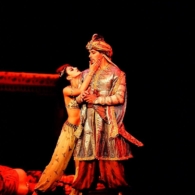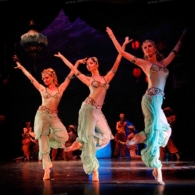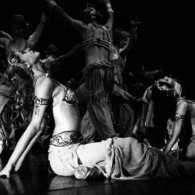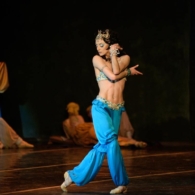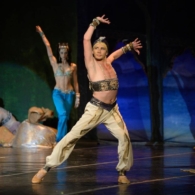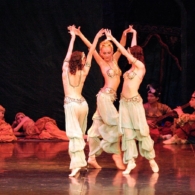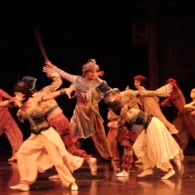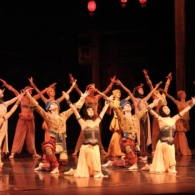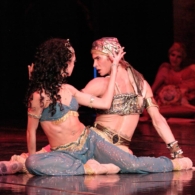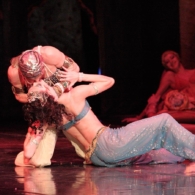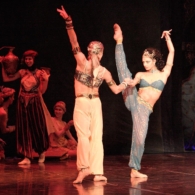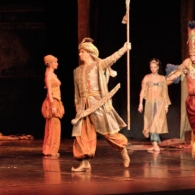Scheherazade
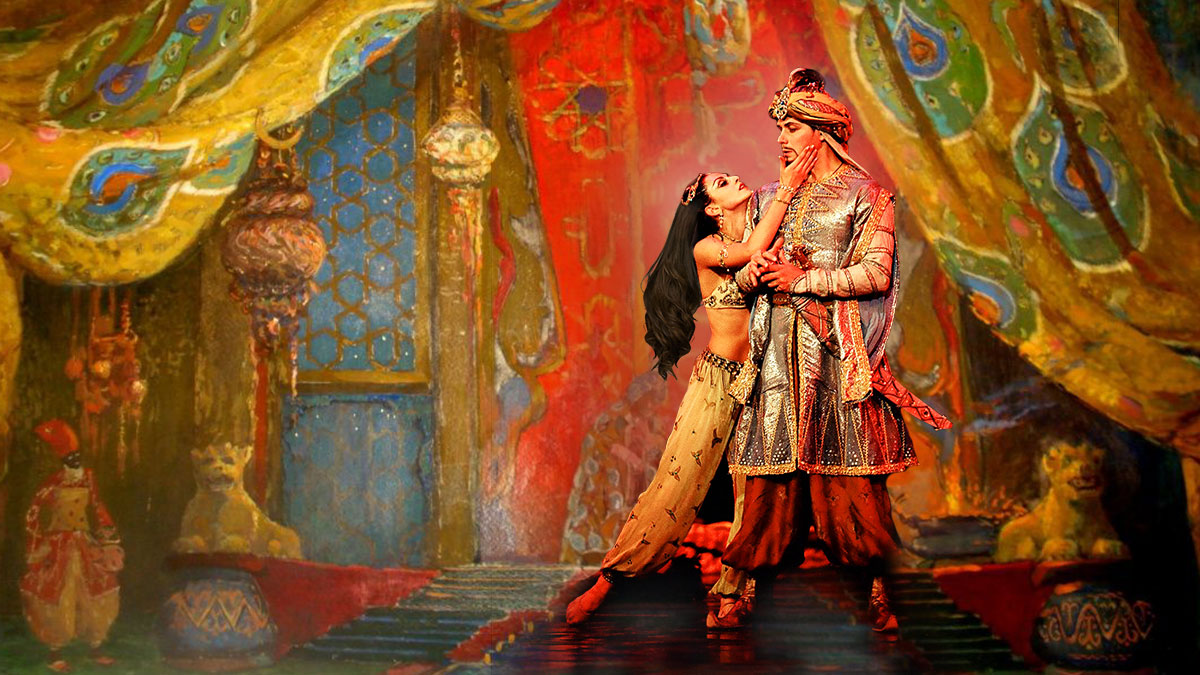
ImprintAbout balletSummaryGallery
Nikolai Rimsky-Korsakov (1844-1908)
Choreography – Michel Fokine
Set design and costumes were made according to sketches by Léon Bakst
“Scheherazade” by N.Rimsky-Korsakov (1844-1908) in its origin is not a ballet but a brilliant symphonic suite. In its creation, the composer’s imagination are cherished by images of the mysterious life of the East and the vast South Sea, which was sometimes majesticly calm, and other times extremely rapid, on the waves of which Sinbad the Sailor travelled on his ship in search of romantic adventures.
The composer prefaced his work with the following words: “Sultan Shahriyar, convinced of women’s treachery and infidelity, swore to execute each of his wives after the first night, but Sultana Scheherazade saved her life because she managed to attract the Sultan with her fairytales, telling them to him in the course of 1001 nights…”
Two musical portraits open the symphonic fresco: in the sharp unisons of the brass instruments and the low stringed instruments are seen the features of the Relentless Sultan, and in the enveloping languid melody of the solo violin – these of the beautiful Scheherazade…
And then – a sea picture and exciting episodes of oriental fairytales…
M.Fokine, when referring to Rimsky-Korsakov’s work, did not feel bound by the original story. He was attracted by the music – bright, showy and colourful, but he made his own libretto, with the deletion of part 3 from the four-part work, a fact that led to the indignation of the large family of the already late composer.
However, the choreographer’s imagination went over the shaped paths close to the original music (the luxury East, harem). There was not any blasphemous incompatibility, although the naturalistic drama staged by Fokine, was rather based on his own vision than on the original music. The main thing was an extraordinarily beautiful musical spectacle. The symphonic masterpiece in Fokine’s innovative choreography found another life in the art – this time on the ballet stage.
The composer prefaced his work with the following words: “Sultan Shahriyar, convinced of women’s treachery and infidelity, swore to execute each of his wives after the first night, but Sultana Scheherazade saved her life because she managed to attract the Sultan with her fairytales, telling them to him in the course of 1001 nights…”
Two musical portraits open the symphonic fresco: in the sharp unisons of the brass instruments and the low stringed instruments are seen the features of the Relentless Sultan, and in the enveloping languid melody of the solo violin – these of the beautiful Scheherazade…
And then – a sea picture and exciting episodes of oriental fairytales…
M.Fokine, when referring to Rimsky-Korsakov’s work, did not feel bound by the original story. He was attracted by the music – bright, showy and colourful, but he made his own libretto, with the deletion of part 3 from the four-part work, a fact that led to the indignation of the large family of the already late composer.
However, the choreographer’s imagination went over the shaped paths close to the original music (the luxury East, harem). There was not any blasphemous incompatibility, although the naturalistic drama staged by Fokine, was rather based on his own vision than on the original music. The main thing was an extraordinarily beautiful musical spectacle. The symphonic masterpiece in Fokine’s innovative choreography found another life in the art – this time on the ballet stage.
Sultan Shahriyar is bored and entertained by odalisques and his beloved wife Zobeida. The younger brother of the Sultan, Shahzeman, hints that Zobeida is unfaithful to her husband. To check this, Shahriyar goes hunting. An orgy begins in the harem, in the midst of which the Sultan suddenly returns. He orders to execute his concubines, eunuchs and black slaves. Zobeida kills herself…

